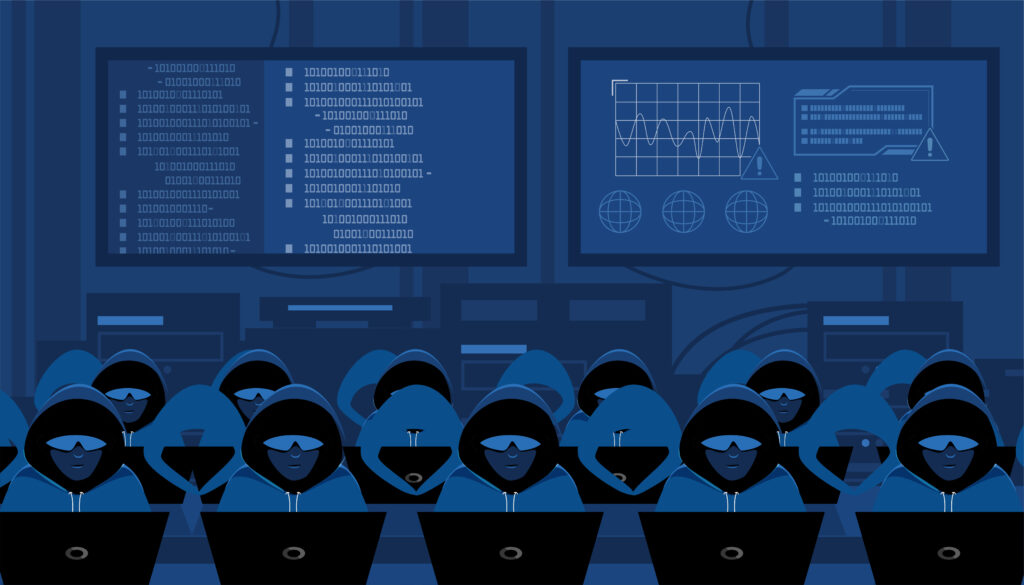In our increasingly digital world, cyberattacks have become a significant concern for individuals, businesses, and organizations. One of the most disruptive and common forms of cyberattack is a Distributed Denial of Service (DDoS) attack. This article aims to shed light on what a DDoS attack is, how it works, and, most importantly, how you can protect yourself and your digital assets from these malicious traffic schemes.

Understanding DDoS Attacks
A Distributed Denial of Service (DDoS) attack is a malicious attempt to disrupt the regular traffic of a targeted server, service, or network by overwhelming it with a flood of Internet traffic. In a DDoS attack, multiple compromised devices, often referred to as a “botnet,” work in unison to generate an overwhelming volume of requests or data, rendering the targeted system or network unable to function properly.
How DDoS Attacks Work
DDoS attacks exploit the fundamental design of the internet, which relies on the ability to communicate and exchange data between devices. Here’s a simplified overview of how a DDoS attack works:
-
Botnet Formation: The attackers gain control of a network of compromised devices, such as computers, servers, IoT devices, or even smartphones, using malware or other unauthorized means. These compromised devices are often referred to as “bots.”
-
Coordination: The attackers coordinate the botnet to initiate a massive volume of requests or data traffic to flood the target. This can be achieved through various methods, including using a command and control (C2) server to issue instructions to the bots.
-
Traffic Overload: The botnet floods the target with a deluge of requests or data, overwhelming its capacity to handle legitimate traffic. This results in a slowdown or complete disruption of services.
-
Detection Evasion: Attackers often employ techniques to conceal their identities and origins, making it challenging to trace and stop the attack.
-
Impact: The impact of a DDoS attack can range from temporary inconvenience to severe financial losses for businesses, reputational damage, and even a breach of sensitive data if the attack is used as a diversionary tactic.
Types of DDoS Attacks
DDoS attacks come in various forms, each targeting different aspects of a network or system. Common types include:
-
Volumetric Attacks: These focus on overwhelming a target with a massive volume of traffic, such as UDP or ICMP floods.
-
TCP State-Exhaustion Attacks: These aim to exhaust the available connections on a target server, rendering it unable to respond to legitimate requests.
-
Application Layer Attacks: These target specific applications or services, often focusing on vulnerabilities in the application layer, like HTTP floods.
-
DNS Amplification Attacks: Attackers manipulate DNS servers to amplify the volume of traffic directed at the target.
-
NTP Amplification Attacks: Similar to DNS amplification, these attacks exploit NTP servers to increase the traffic volume.
Staying Safe from DDoS Attacks
Protecting yourself or your organization from DDoS attacks requires a multi-faceted approach that combines proactive measures and readiness. Here are some strategies to help you stay safe from malicious traffic schemes:
-
Implement DDoS Mitigation Services:
Invest in a reliable DDoS mitigation service or solution. These services help detect and mitigate DDoS attacks in real-time, diverting malicious traffic away from your network while allowing legitimate traffic to pass through.
-
Regularly Update and Patch Systems:
Ensure that all your systems, including servers, routers, and firewalls, are up to date with the latest security patches and updates. Many DDoS attacks exploit known vulnerabilities that can be mitigated through updates.
-
Use Content Delivery Networks (CDNs):
CDNs distribute web traffic across multiple servers in various locations, reducing the risk of a single point of failure during an attack. Many CDNs also offer DDoS protection as part of their services.
-
Configure Firewalls and Intrusion Detection Systems (IDS):
Properly configure firewalls and IDS to filter out potentially malicious traffic. Set up alert systems to notify you of unusual traffic patterns.
-
Rate Limit Traffic:
Implement rate limiting and throttling mechanisms to control the amount of incoming traffic. This can help prevent traffic floods from overwhelming your system.
-
Analyze Network Traffic:
Continuously monitor your network for suspicious traffic patterns and anomalies. Implement network traffic analysis tools that can detect and respond to unusual behavior.
-
Incident Response Plan:
Develop a comprehensive incident response plan that includes steps to take in the event of a DDoS attack. Define roles and responsibilities and establish communication protocols.
-
Traffic Filtering:
Use traffic filtering solutions, such as blacklisting or whitelisting IP addresses, to block known malicious sources or limit traffic to trusted sources.
-
Educate and Train Staff:
Ensure that your staff is educated about DDoS attacks and understands how to recognize potential threats. Conduct regular training and awareness programs.
-
Backup and Recovery:
Regularly back up critical data and systems. Having reliable backups can help you quickly restore services if they are disrupted by a DDoS attack.
-
Collaborate with ISPs:
Build relationships with your internet service providers (ISPs) to collaborate on traffic filtering and mitigation during attacks.
-
Seek Professional Assistance:
In some cases, it may be necessary to consult with cybersecurity experts who specialize in DDoS mitigation and response.
Conclusion
DDoS attacks remain a prevalent and disruptive threat in the digital landscape. To stay safe from these malicious traffic schemes, individuals and organizations must employ a combination of proactive measures, network defenses, and preparedness strategies. By implementing DDoS mitigation services, maintaining up-to-date systems, and staying vigilant, you can significantly reduce the risk of falling victim to a DDoS attack and its potentially damaging consequences.